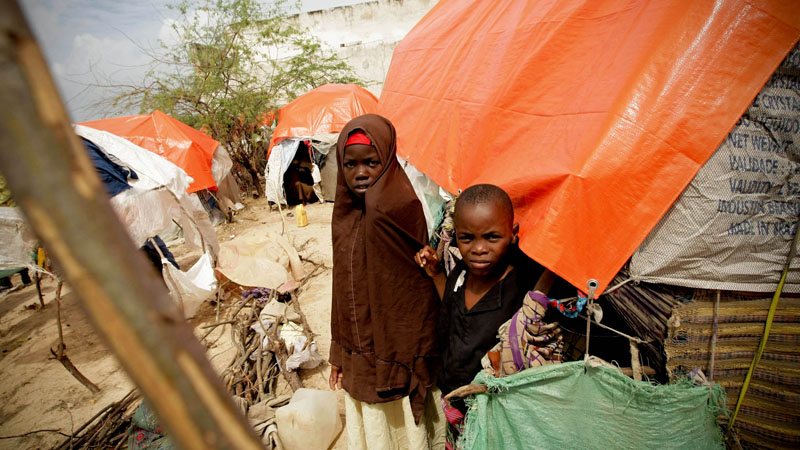Drought across East and Southern Africa has left nearly one million children needing treatment for acute malnutrition and forced women to trade sexual favours for water.
That’s the assessment of the UN Office for the Coordination of Humanitarian Affairs (OCHA), which warns treatment for HIV/AIDs and tuberculosis has also declined as hospital water supplies dry up.
Its latest report says the international community needs to stump up billions to prevent further humanitarian disasters linked to Africa’s erratic rainfall through 2017.
“The drought has disproportionally affected women and children, exacerbating existing protection threats and vulnerabilities and creating new ones,” says its Global Humanitarian Overview 2017, which was published this week.
It lists among the hazards: “increased exposure to wild animals and sexual violence as they travel in search of water or wild foods; sexual exploitation, in particular exchange of sexual favours for food, money and water; and children dropping out of school due to lack of water and food, and entering into child labour or early marriage.”
Did the #Marrakech #climate talks deliver for world’s poorest? @tosimm + @manjeetdhakal assess the evidence https://t.co/0jaXwgA3Rv
— Climate Home News (@ClimateHome) December 5, 2016
“Food insecurity and malnutrition will continue to drive humanitarian need,” the report says.
“Across the Sahel, hundreds of thousands of households live in unacceptably precarious conditions. Food insecurity, acute malnutrition, disease and disasters are a reality for millions.”
Senegal, Somalia, Nigeria, Niger, Ethiopia, Djibouti and the Democratic Republic of Congo are among the African countries deemed most at risk if drought continues.
“The northeast of Nigeria is experiencing a severe protection, food and nutrition security crisis,” says OCHA. “Famine-like conditions are forecast for 120,000 people and 5.1 million people in all are expected to be food insecure by mid-2017.”
Below average rains in East and Southern Africa this year devastated farmlands, wiped out livestock and left one million children needing treatment for acute malnutrition.
Crop failures across South Africa, Zimbabwe, Malawi and Botswana left a 9.3 million tonne cereal production deficit in 2016.
While poor rains in parts of Africa are usual in an El Nino year, scientists say global warming due to the burning of fossil fuels has exacerbated the impacts of the weather phenomenon, which usually occurs every 5-7 years.
El Nino’s successor La Nina usually brings relief with above-average rainfall, but according to the UN and forecasters at US agency NOAA, this may be weaker than expected.
With 90% of farmers in Africa relying on rain to feed their crops, this will worsen an already tough situation it warns.
“Preparedness, early action and investment in climate resilience are essential instruments for preventing El Niño and La Niña events from evolving into disasters,” the report says.
While scientists are working on identifying links between specific weather events and climate change, Africa’s drought offers a sense of life in a warming world said Oxfam climate change lead Tracy Carty, who urged developed countries to invest more in climate adaptation projects.
“It’s a foretaste of future suffering and hunger, but I think the trend of increased drought in East and Southern Africa is aligned with what we are expecting across the region because of climate change,” she said.
“African agriculture is in a perilous position: yields are stagnating at levels below global levels, there’s an existing development deficit due to a lack of transport and market, and there’s a reliance on rain-fed systems.”
